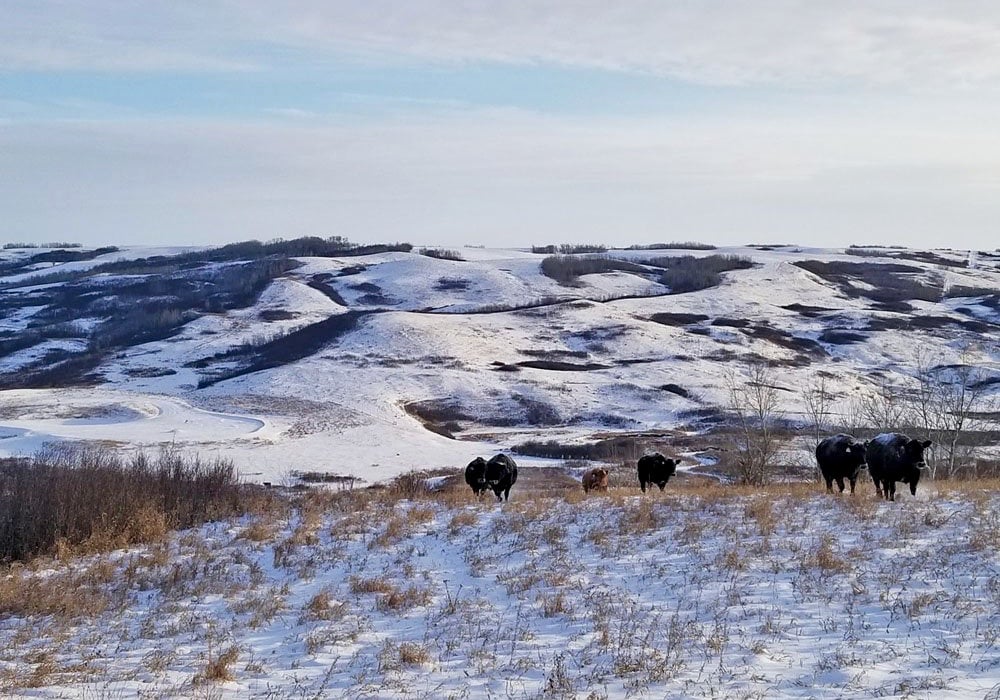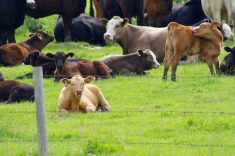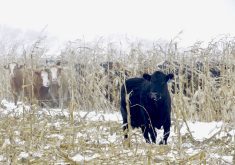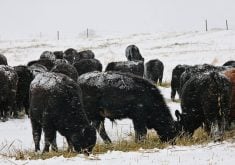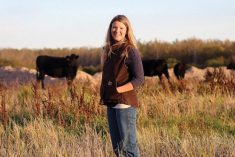Being recognized by their peers is an honour, but the Vandervalk family has also discovered that good environmental practices pay off in a big way.
“We found out that we can make more money and do less work by doing rotational grazing on what we used to call hayland,” said Jack Vandervalk, a recipient of Alberta Beef Producers’ 2016 Environmental Stewardship Award with wife Merry, son Gerald, and Gerald’s family.
The family was recognized for initiatives such as extending their grazing season and using portable watering systems to preserve the local creek on their 4,400-acre operation near Claresholm, which is home to 400 Beefbooster cows.
“It’s important to manage the native grassland properly,” said Jack. “We’re not grazing it in the growing season, and we’re improving it a lot. Rotational grazing seems to be harder on the weedy plants. We’re getting rid of those and they don’t seem as bad.”

Thanks to rotational grazing and a solar-powered portable watering system, the Vandervalks, who own VXV Farms, make good use of their native rangeland, and use that for grazing in the fall and winter. They’re even starting to do some rotational grazing in the dormant season to level out the nutrition for the cattle.
Their portable solar watering system has allowed them to tap into different water sources to make their grazing even more intensive.
“Every year, we get a little more intensive with the grazing,” said Gerald. “One field would hold them for a week. Now we break it up and hold them for three to four days versus a week. The utilization is significantly better and the rest periods are longer.”
“We’re improving the ranch by doing the things we do,” added Jack, who grew up on the ranch. “Over 60 years, we’ve learned a lot.”
The Vandervalks began rotational grazing more than a dozen years ago and have begun to move to smaller pasture sizes.
The family has worked with Cows and Fish, are active members of the Society for Range Management, and has helped many neighbours with watering projects. They also use recycled goods around their farm, such as fibreglass posts from the oilfields for fencing and old tires for water troughs.

To make the troughs, the sidewalls of the tires must be cut out, so they began using them to make shelters. They’ve installed about 26 calf shelters on their property and have made some for neighbours, as well.
“A lot of the repurposed material is good stuff and if it’s going to work for what we need, then it makes sense to use it,” said Gerald.
Due to their intensive rotational grazing system, the Vandervalks don’t buy a lot of machinery.
“We spend a fair bit on electrical fencing, but you can reuse it again,” said Jack.
The operation has also been involved with genomics for over 40 years with the focus on having a more efficient cow. All of the cattle have their DNA tracked and all of the parentage of the cattle is monitored.
Read Also

Horns aren’t unlocking anytime soon on livestock transport standards
Standards good enough meet the definition of “humane” animal transportation still vary widely between what what industry wants, what animal rights advocates want and, between the two, what federal regulators decide is good enough.
“We haven’t made a lot of money with it, but we have a better cow herd and my son has better cows to work with,” said Jack. “It’s a little extra work, but I think it pays off in the long run.”
The cows’ DNA is tracked using special ear tags and the animals are weighed at birth, weaning, and then annually.
In addition to the environmental benefits, the Vandervalks have found that they’re getting great production from their system. Moving the cattle frequently allows the grass to have longer rest periods and the cattle are eating some of the less desirable species. The system is allowing the Vandervalks to run more cows and get better use of their pasture.
“Some people think that moving cows every day is a time commitment, but we don’t find it to be,” said Gerald. “It forces us to go out there every day and we look at them much more often.”





